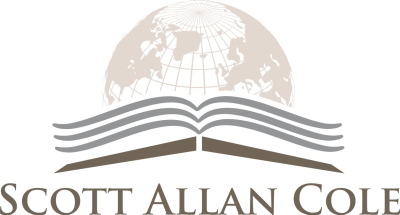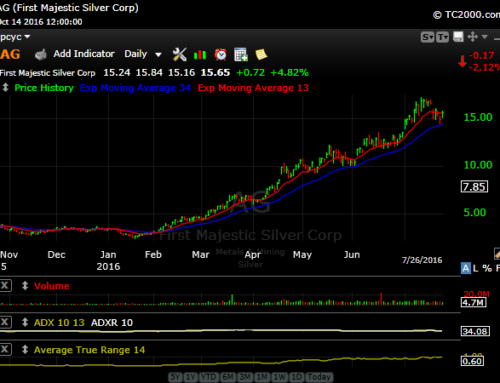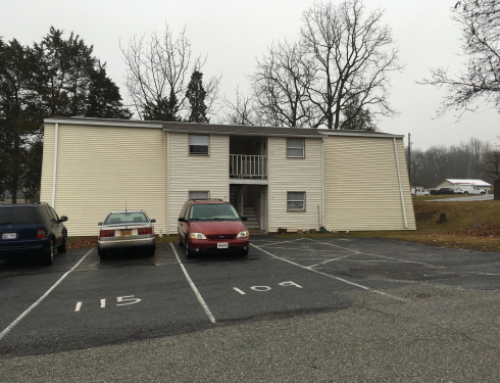On Thursday, the latest CPI report indicated year over year inflation had dropped from 8.2% in September to 7.7% in October.
The markets rejoiced.
The thinking is that the Fed will begin to pivot away from its tightening phase by raising rates by 50 basis points in December, and then likely pause.
With this in mind, I thought I would offer some perspective. Below are my key bullet points, followed by my reasoning for expecting inflation rates to remain much higher than normal for the foreseeable future.
- Tightening interest rate policy does not cure inflation… high interest rates are designed to reduce demand by creating a recession
- Current Fed monetary policy is nowhere near “tight”
- There is still far too much speculation in the markets, meaning, there is still too much money in the system
- The reaction to the CPI report in other markets suggests the Fed may pivot too soon
- China re-opening economy
Let’s have a more detailed look at each of these issues.
High Interest Rates Do Not Cure Inflation
In order to gain an understanding of where we are now in this monetary cycle, it’s a good idea to look at the most recent bout of high inflation in our economy… the 1970’s.
In 1972, the inflation rate for the year averaged 3.2%. Within a year, it was averaging 6.2% and by the end of 1973, year-over-year inflation was up to 8.7%.
The causes of the inflationary period that followed, which culminated in an average rate of 13.5% in 1981, included substantial fiscal spending begun under Lyndon Johnson; an expansion of Social Security under Nixon; abandonment of the gold standard under Nixon; and an energy crisis due to wars in the Middle East.
With all this going on, the Federal Reserve was too loose with monetary policy due to pressure from Nixon, who wanted cheap money to keep the economy running hot.
It wasn’t until Paul Volcker hiked rates to nearly 20% after Reagan took office, that the economy underwent a severe recession that inflation was finally brought under control.
Current Fed Monetary Policy is nowhere near tight
The inflation rate peaked over the summer above 9.1% and it has since declined to 7.7%, as mentioned.
While that is a nice trend, we need to understand why it has pulled back a bit, and why it will likey head back higher.
First of all, the Fed Funds rate was just raised to about 4%. Yields across the Treasury curve range from about 3.7% to 4.25%.
As a result, real yields are still well in negative territory, which means monetary policy is actually still generally considered easy.
As I mentioned before, Paul Volcker raised the Fed Funds rate to 22% when inflation rose above 14%.
The result was that monetary policy slammed the breaks on the economy and a nasty recession ensued. GDP dropped by about 3% and unemployment rose to nearly 11%.
The ultimate effect was that inflation declined to 3% by 1983, and an economic recovery began.
Based upon this precedent, it would appear that the Fed would need to hike the Fed Funds rate to at least 8% to send the economy into a steep enough recession to get inflation under control.
However, let’s look at more recent history.
In 2006, as the housing bubble was peaking, inflation hit 4.3%. The Fed had begun its tightening cycle in 2004 after years of easy policy due to 2000-2003 recession.
At the beginning of the rate hike cycle, Fed Funds was at about 1%. Eventually, it reached 5.25% by June 2006, and the housing bubble burst.
However, inflation actually stayed somewhat elevated over the next couple of years, peaking at 5.6% in 2008.
It wasn’t until The Great Recession took hold that inflation dropped significantly.
The point I am making with this more recent history is that a significant recession occurred AFTER the Fed Funds rate rose to above the level of inflation, and then the inflation still continued to rise a bit.
Yet, we are nowhere near that level of Fed Funds rate, which is still nearly 4% below the rate of inflation.
With that said, it can also be argued that the more recent bubble caused by the Fed’s money printing in 2020 is even larger than the dot.com bubble of the late 1990’s and the ensuing housing bubble.
This is because more asset classes have been involved… stocks, housing, commodities and this new thing called Cryptocurrency.
While the Fed has indeed raised rates quite abruptly, it is because they were so far behind the curve.
Below is a monthly chart of Eurodollar futures going back forty years. Subtract the price from 100 to get an idea of where Fed Funds stood at any given time.
You’ll note that the current Eurodollar price is still above the low seen in 2006, yet the level of inflation is significantly higher.
Too much money in the system and the market reaction
It appears to me that there is still way too much money floating around in the system.
The reaction to the CPI report was an enormous rally in the stock market. The Dow Industrials climbed 1,200 points, or 3.7%. The Nasdaq Composite, which has been leading to the downside, climbed over 7%.
This indicates that there was a lot of money on the sidelines, and pent up demand for stocks. In other words, the Fed has not yet done its job. It has not curbed demand for assets.
Here’s an even more extreme example that occurred before the CPI report came out.
Last weekend, the brilliant horse Flightline won the Breeder’s Cup Classic. It was announced that he’ll be retired to stud, and a 2.5% share was sold for $4.5 million.
This places the value of Flightline at $180 million!
I would also note that the Dollar Index has declined sharply in recent days, and gold has rallied to multi-month highs.
These are both signs that the market expects inflation to continue, and not get back down to early 2021 levels below 3%. Below is a chart of recent gold futures prices.
Gold prices have been under pressure all year as the Fed has hiked rates. If the market believes the Fed is about to pivot before inflation is reigned in, the gold market will rally. We’ve seen the beginning of that in the last week, as gold has risen over $120.
China rejoining the global economy will put upward pressure on prices
While inflation has remained at elevated levels in 2022, and only declined modestly from the peak, there is one major issue that nobody seems to be thinking about…
China’s economy has been on a self-imposed lockdown due to its zero-Covid policies for much of the year. This week, it released a 20 point plan to re-open its economy.
That will result in much higher demand than what we’ve seen in recent months for oil, copper and other commodities.
China is the world’s second largest economy, and the fact that it has been on lockdown should scare everyone.
Final Thoughts
I watched a video from this past Spring of legendary investor Stanley Druckenmiller expressing his concerns about where we go from here.
He is humble enough to understand that his concerns may be overblown, but he has over 40 years experience managing money and generating big returns for his investors.
Druckenmiller thinks we have two likely scenarios…
One, the Fed hikes rates high enough to cause a steep recession, and maybe even a depression.
Two, the Fed stops pivots too soon and we end up with 1970’s style stagflation with weak economic growth and high inflation.
Scenario Two is what occurred earlier on during the 1970’s, because Nixon had the Fed Chairman under his thumb. It required a singularly focused Paul Volcker to get it back under control.
The current environment reminds me more of Scenario Two. I don’t believe Powell will be strong enough to follow through on his promise to contain inflation.
An economic recession would virtually guarantee a Republican in the White House in 2025, and nobody in DC wants that anymore.
Therefore, given how dovish the Treasury Secretary Yellen is, and how DC will desperately want to hold off a recession, I would expect an enormous amount of pressure be placed on Powell.
There are certainly a number of dovish members at the Fed, and they will at least be advocating for a pause in the rate hikes.
The bottom line is that the Fed put itself in a bad position by ignoring the early rise in inflation levels last year, and the fiscal policy of the Biden administration, along with its disastrous energy and foreign policies are similar to the conditions of the 1970s.
We’ll see how it all shakes out, but it could get ugly.







Leave A Comment